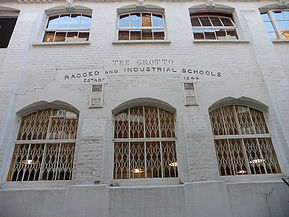
.png)
LONDON
The development of the landscaping here ( from 1718 by Willam Kent and later by Charles Bridgeman) for Lord Burlington was very influential, notably at Rousham, Stourhead and Stowe. The old formal garden and canalised brook was naturalised with water becoming active and the gardens penetrated by architectural features, fabriques and statuary. Kent’s ‘ruined’ cascade- grotto would be seen later at Stowe and Bowood.
The was the centre of John Castles’shell ‘emporium’ where landscape enthusiasts would come to purchase shells and design plans. There was a pleasure garden ‘Vauxhall’ here also in the eighteenth century’.
Located opposite each other like gate lodges in what was the 18th century Pleasure Garden of Grosvenor House. The 2 small garden store houses are now in a small public park. They are decorated with scallop shell motifs but no public access is allowed.
Princess Amelia lived at Gunnersbury Park, from 1761 (after the death of her father George II) until 1786. The Bath House was built and decorated with shells and minerals by 1777. The two mansions we see today were built to replace the original 17th century building.
Richard Bentley’s (scallop) shell seat (1753) was originally positioned by the Thames and is reflected in other rocaille work throughout Horace Walpole’s extravagant neo-Gothic villa at Twickenham. Walpole admired Mary Delany, shell artist, his ‘enchantress of the grotto’ in Bulstrode. His eccentric style signalled the end of Arcadian landscaping as a fashion.




